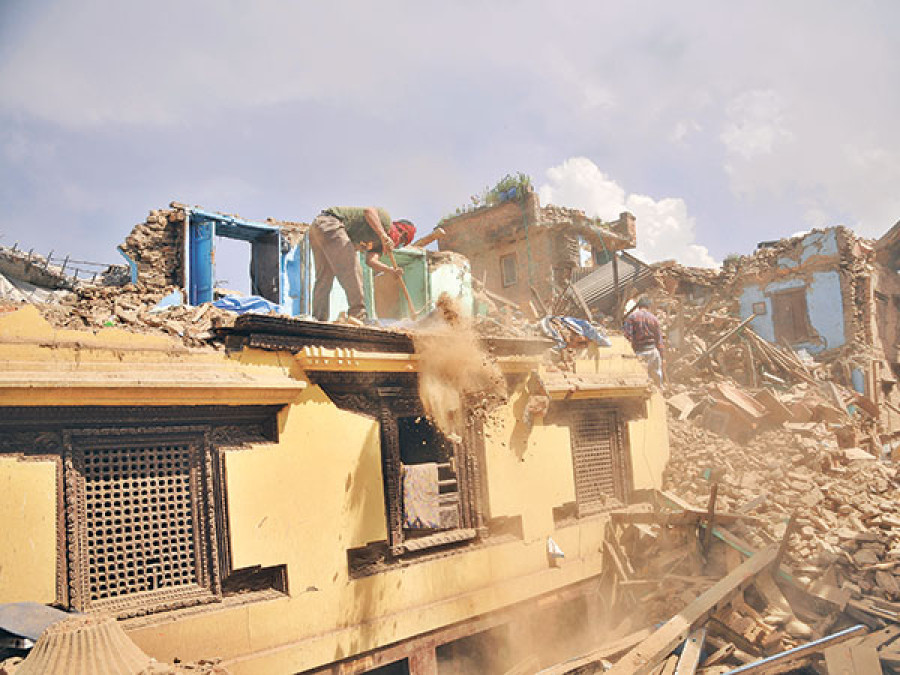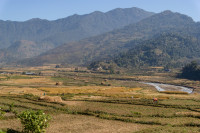Opinion
The aftermath
The current adversity presents an opportunity to bring about policy changes and enforce them
Sophia K Tamot
In the aftermath of the April 25 quake, while the earth underneath was continuously moving and the nation was scrambling to set up rescue and relief missions, the next big shock was to see and hear ministers telling national and international media that Nepal had never seen it coming. The government’s own Department of Mines and Geology has been tracking the movement of the earth and working to sensitise people about the eventual big one, for years. And donors have been talking about disaster risk management for at least a decade.
Remarkable resilience
Many a commentary since has focussed on our government’s as well as the public’s lack of preparedness for such a disaster, despite warnings since 1934. Experts have long predicted a quake of a similar magnitude was imminent and could wipe out populations numbering to the hundred thousands. The main tremor apparently lasted only 30 seconds and according to geologists, the results would have been catastrophic had it lasted 30 seconds more.
The Nepal Army responded quickly with its resources, sense of organisation, and chain of command. The speed with which the government, with some external assistance, was able to get the electricity supply back up and ensure that communication lines stayed open went a long way to quell panic. As our one and only airport was remarkably undamaged, global assistance and rescue experts were able to enter the country.
The people demonstrated remarkable communal resilience and worked to quickly mobilise community and volunteer groups, and try and get relief to as many as possible. The commitment with which communities, irrespective of their cultural, ethnic, or religious backgrounds, united to help those in need is a strong reminder that despite all the differences, underneath it all, Nepalis are still united.
The coming cost
Tremors are expected to last several weeks, so our trauma will continue. The death toll has crossed 7,000 and is predicted to go over 10,000 with casualties expected to be two-fold this number. But the real tragedy for Nepal is the aftermath, which will come at a huge cost. With hundreds of thousands displaced and homeless, and 60 percent of those that perished in the working-age group, it is clear that Nepal’s development will be set back as reconstruction and rehabilitation become the nation’s priority.
An initial survey carried out by the Nepal Engineers Association found out that around 35 percent of buildings in Kathmandu are uninhabitable or unsafe. Over 150,000 buildings have already collapsed and 600,000 houses are damaged across the country.
Pictures of badly damaged high-rise apartments are circulating on social media. Many are likely to be deemed unfit for habitation and will have to be knocked down. This begs several questions. What will happen to people’s investments in these apartments that were sold as earthquake-resistant? Will the Commission for the Investigation of Abuse of Authority (CIAA) go after the realtor sharks who lied to the people and bribed the authorities, or after the officials who authorised the construction of such buildings without properly verifying the conditions of the soil and the quality of building materials? How will this impact the financial sector that has so much investment tied up in realty?
If we look back, our decade-long conflict made people throng to the cities in search of work and shelter. Rapid urbanisation took place as a response to growing demands for housing. This resulted in the approval of many high-rise buildings, supported by banks eager to sanction easy loans. But our leaders and officials failed to impose the Building Code of 1994.
Initial assessment estimates the country’s economic losses at $10 billion, half of our country’s GDP. The challenge ahead will be to ensure an economic recovery on such a scale. Shortage of manpower is a compounding issue. How many of the million people who have left the Valley since the earthquake return? Even if they want to, finding affordable accommodation will be a challenge. Poorly built, weak houses damaged by the quake will be dismantled. The sturdier ones will seek higher rent and if demand outstrips supply, rent prices will continue to climb.
Tourism, our main source of revenue, is likely to take a hit for a few years. Indeed, accidents happened in the mountains and our heritage sites are destroyed, but the coverage of the crisis in the international media will discourage anyone who is planning to visit Nepal in the near future. Tourism alone employs about a million people.
Retaining Nepali manpower or attracting those who are outside with skills is a challenge, and the government will need to plan incentives around this strategy. Yes, investments in big infrastructure projects have been pledged but they are not enough; we will need to create hundreds of thousands of jobs. Remittances that have helped keep our economy afloat for years will now be even more valuable.
An opportunity too
The current adversity presents an opportunity for Nepal to not only bring about policy changes and enforce them, but to do what is necessary to enable the creation of small and medium-sized enterprises to hold off more Nepalis from migrating abroad and to build on the positive aspects that we are witnessing among communities in the thick of the present crisis.
For one, the scrutiny over the Prime Minister’s Relief Fund is a good thing. People’s natural reaction to the government’s decision to divert newly set-up funds to this basket was that government had acted in haste, without having thought through the chain reaction it would have on individual donations and community volunteerism. But this is only a temporary setback, because where there is will, there is always a way.
In the end, the performance of a government is measured by how it handles a crisis, such as this. We know capacity and agility is lacking, so the government should not try and control or centralise efforts, but rather ensure coordinated and consistent mobilisation of all quarters—volunteers, businesses, and donors, including friends of Nepal.




 7.12°C Kathmandu
7.12°C Kathmandu










